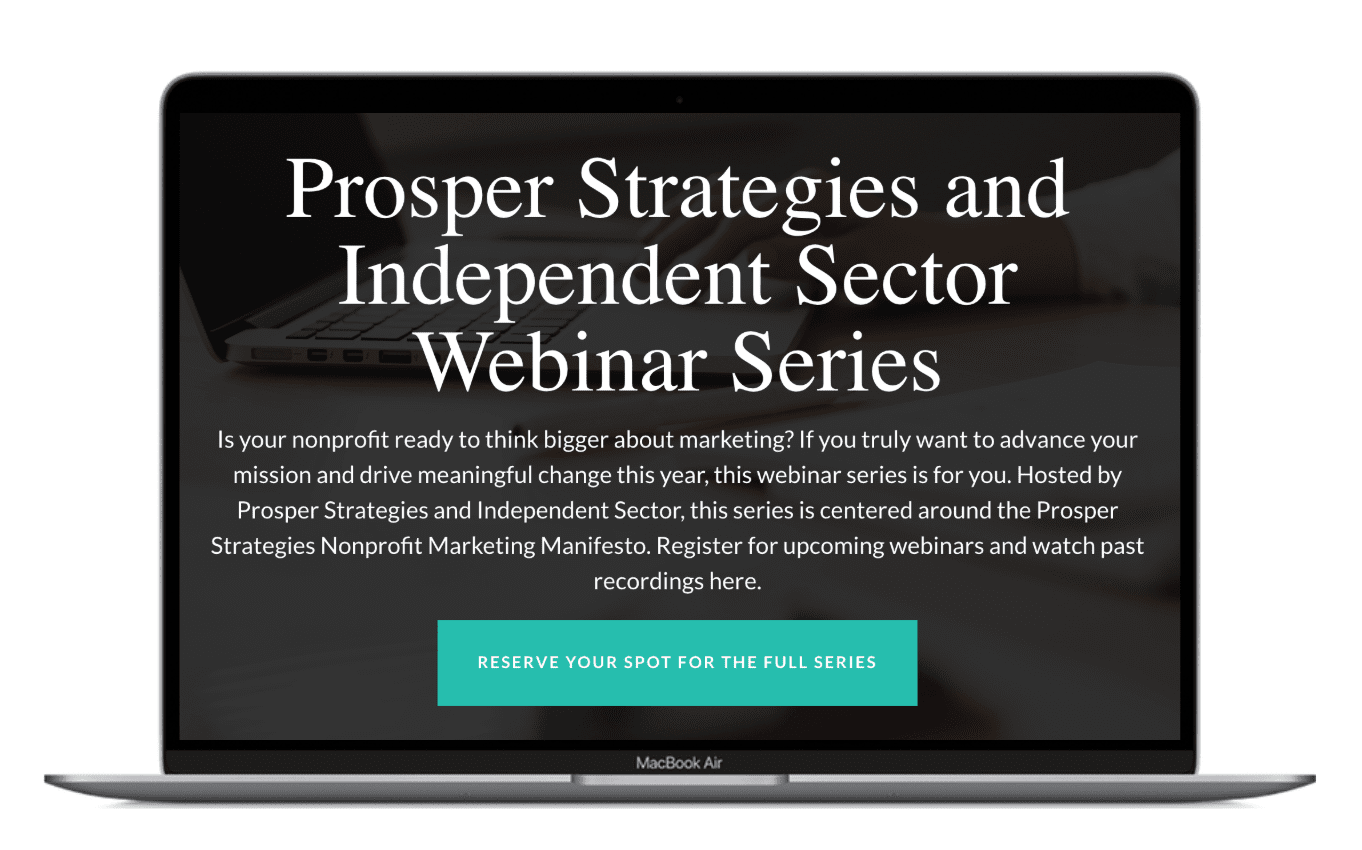Every nonprofit organization has its own unique mission and goals. No two nonprofit marketing plans are exactly the same either. But when leveraging marketing to advance your organization’s impact, you should keep some key nonprofit marketing best practices in mind. These are four (of the many) things successful nonprofits with amazing marketing do:
- They align their marketing plans with their strategic goals.
- They’re smart about social media.
- They leverage new technology.
- They understand their audiences.
Read on to learn more about what organizations with great marketing do to stand out to their audiences and compel their stakeholders to take actions that advance their missions.
They align their marketing plans with their strategic goals.
Marketing is for more than just fundraising or awareness, and actually helps drive social change. So, successful organizations assign strategic goals with specific tactics in their marketing plans that will allow them to achieve those goals.
In fact, we’ve found that the best marketing plans are those developed alongside an organization’s strategy. In order to be successful, they cannot live separate from each other.
[bctt tweet=”We’ve found that the best marketing plans are those developed alongside an organization’s strategy.” username=””]They’re smart about social media.
In an analysis we conducted of nonprofits with the most Facebook followers including UNICEF, NPR, The MET, PETA, PBS, American Red Cross and Human Rights Watch, we found that organizational Facebook pages with the most followers also post, on average, about six times per day. We also recognized these social media best practices for organizations:
- Include a photo or video in every post. But this doesn’t mean posting a link from YouTube. Always upload videos to Facebook as native content. Recently, Facebook began to prioritize posts with all-native content over posts with external links, so it’s extremely important to use outbound links strategically, if at all.
- Never have posts that just say “contact us” or “donate now.” Each post should be educational and engaging first, and calls to action should be secondary (if they’re included at all).
- Tag other pages and use hashtags whenever possible, relevant and beneficial. This is because Facebook prioritizes posts that keep people on Facebook.
The important takeaway here is that these impactful organizations don’t treat their Facebook pages as fundraising tools. Instead, they use social media to build a community and educate their audiences about their missions until those audiences are ready to take action.
[bctt tweet=”The most impactful organizations don’t treat their Facebook pages as fundraising tools.” username=””]Of course, not every nonprofit can reach the same follower count as NPR or the American Red Cross, but following their example is a great way to make the most of your social media presence.
They leverage new technology.
In the modern nonprofit marketing mix, there is (and may always be) a place for direct mail asks and email newsletters. But today, so many more technologies are available to help organizations like yours stand out and make an even bigger impact.
[bctt tweet=”Today, many technologies are available to help organizations like yours stand out and make an even bigger impact. ” username=””]Organizations with the most successful marketing go beyond what’s expected and try new things, like:
- Charity: Water’s virtual reality trip to Ethiopia
- Big Brothers Big Sisters of America’s viral video docuseries
- Best Friends Animal Society’s facial recognition “pet twin” tool
- ACLU’s supporter-made instant donation Amazon Dash button
If you’re interested in learning more about these amazing, tech-savvy campaigns, check out our free resource on nonprofit organizations that have joined the Nonprofit Marketing Revolution.
They understand their stakeholders.
The most clever and creative marketing tactics in the world won’t make an impact if they’re not tailored to your organization’s most important stakeholders.
We’ve found that a common challenge many organizations face today is reaching a younger prospective donor base. One way to learn what resonates with younger donor targets is to pay close attention to how other organizations are communicating with similar audiences. You can use tools like ResearchPoint or WealthEngine to see if younger donors are, in fact, supporting those organizations.
But understanding your audiences doesn’t just mean telling donors what you think they want to hear. Nonprofits with the best marketing also understand how their words and actions affect the communities they serve. That’s why successful organizations are using more “strengths-based” language, which highlights the potential positive future, as opposed to “needs-based” language, which focuses on the problems a community faces.
 If you’re interested in diving deeper into successful nonprofit marketing and branding, watch our latest webinar recording: “Leverage Marketing as a Tool for Social Change” to learn more about the first commitment of the Nonprofit Marketing Manifesto: “We will recognize marketing as a tool for driving social change.”
If you’re interested in diving deeper into successful nonprofit marketing and branding, watch our latest webinar recording: “Leverage Marketing as a Tool for Social Change” to learn more about the first commitment of the Nonprofit Marketing Manifesto: “We will recognize marketing as a tool for driving social change.”
You can view all of our archived webinars here, or register for the rest of the series.
